 March 25, 2021 John E. Ross, KD8IDJ, Editor
| ||||||
FCC Not Yet Collecting $35 Application Fee The majority of the FCC's revised Part 97 rules (adopted in December 2020) establishing new application fees become effective on April 19, but the new amateur radio application fees will not become effective on April 19. The FCC announced on March 19 that the amateur radio application fees, including those associated with Form 605 filings, would not become effective until the "requisite notice has been provided to Congress, the FCC's information technology systems and The $35 fee, when it becomes effective, would apply to new, modification (upgrade and sequential call sign change), renewal, and vanity call sign applications, as well as applications for a special temporary authority (STA) or a rule waiver. All fees will be per application. Administrative updates, such as a change of mailing, email address, or name, are exempt. It is expected that such fees will not become effective before summer 2021. The FCC has stated that amateurs will have advance warning of the actual effective date, because it will publish such date in the Federal Register. ARRL Volunteer Examiner Coordinator (VEC) Manager Maria Somma, AB1FM, said VECs and Volunteer Examiner (VE) teams will not have to collect the $35 fee at exam sessions. Once the FCC application fee takes effect, new and upgrade applicants will pay the $15 exam session fee to the VE team as usual, and pay the $35 application fee directly to the FCC via the Fee Filer System or License Manager System. Somma said this information was provided in a VE Newsletter distributed this past week. "Further news and instructions will follow when we have them," she said. FCC Agrees with ARRL and Allows Partial Reprieve on 3.5 GHz Pending future FCC action, amateur radio secondary use of the 3.3 - 3.45 GHz band segment may continue indefinitely. The FCC, as part of a lengthy Second Report and Order (R&O) for commercial licensing of 3.45 - 3.55 GHz adopted on March 17, agreed with ARRL that continued access by amateur radio to 3.3 - 3.45 GHz should be allowed until consideration of the 3.1 - 3.45 GHz spectrum in a later proceeding. The FCC action in WT Docket 19-348 represents a partial -- and temporary -- reprieve from the FCC's December 2019 proposal to remove amateur radio from the entire band, and it makes available an additional 50 MHz than an FCC proposal last fall to allow amateur temporary use of 3.3 - 3.4 GHz. Amateur secondary operation in the 3.45 - 3.50 GHz band must cease The FCC stated that "While we adopt our proposal to bifurcate the band, we adjust our proposal and set 3450 MHz as the frequency at which the band will be split." It agreed "with the ARRL's assessment that the guard band is not necessary from a technical standpoint. We also recognize that the nature of amateur equipment realities makes the 50 MHz at 3400 - 3450 MHz particularly valuable to amateur operators because it means existing equipment can continue to operate in the band for the time being." This allows "amateur operations to continue in the lower portion of the band while the [FCC and federal government users] continue to analyze whether that spectrum can be reallocated for flexible use," the FCC said. The FCC had proposed splitting the band at 3.4 GHz, permitting amateur use in 100 MHz of spectrum "while also providing a buffer to protect flexible-use operations at the lower edge of the 3.45 GHz band." "We therefore allow secondary amateur operations to continue in the 3.4 - 3.45 GHz portion of the band," the FCC said. "We emphasize, however, that amateur licensees remain secondary users, and those that operate on frequencies close to the 3450 MHz band edge must do so with particular caution to avoid causing harmful interference to flexible-use licensees in the 3.45 GHz Service, which hold primary status. In light of these considerations, while amateur operations between 3450 MHz and 3500 MHz must cease within 90 days of the public notice announcing the close of the auction for the 3.45 GHz Service, as specified in the Report and Order; amateur operations may continue between 3300 MHz and 3450 MHz while the Commission, NTIA, and the DoD continue to analyze whether that spectrum can be reallocated for commercial wireless use." "There is no expectation that such operations will be accommodated in future planning for commercial wireless operations in this spectrum, or that amateur operators will receive more than a short period of notice before their operations must cease," the FCC said. ARRL Podcasts Schedule
The latest edition of Eclectic Tech (episode 30) The On the Air and Eclectic Tech podcasts are sponsored by Icom. Both podcasts are available on iTunes (iOS) and Stitcher (Android), as well as on Blubrry -- On the Air | Eclectic Tech. The New ARRL Repeater Directory is Now Shipping The 2021 ARRL Repeater Directory® is now shipping. It includes "crowdsourced" listings contributed by users, repeater owners, and volunteer frequency coordinators. This means more listings that are updated more often. With 24,000 listings, it's the most complete Repeater systems are listed by state/province, city, and operating mode. Digital repeater systems such as System Fusion, D-STAR, DMR, NXDN, and P25 are included. Pages of supplemental information include VHF/UHF and microwave band plans, and repeater operating practices. It features a convenient lie-flat spiral binding. For decades, The ARRL Repeater Directory has been an invaluable source for locating repeater frequencies while traveling. New hams often use the Repeater Directory to find local activity after purchasing a new handheld radio. And public service volunteers keep a copy nearby or in their emergency go-kit. The 2021 ARRL Repeater Directory is available from the ARRL Store or an ARRL publication dealer. Order ARRL Item No. 1434, ISBN: 978-1-62595-143-4, $19.95 retail. For additional questions or ordering, call (860) 594-0355, or, toll free in the US, (888) 277-5289. Repeater listings appearing in The ARRL Repeater Directory are provided by RFinder Inc. If a repeater has been omitted or a listing is inaccurate, contact RFinder directly. Cooperative Effort Under Way to Resolve Potential 70-Centimeter Interference Issue ARRL, the FCC, and the US Department of Defense are cooperating in an effort to eliminate the possibility of amateur radio interference on 70 centimeters to a future missile control system at White Sands Missile Range (WSMR) in New Mexico. The Defense Department's Regional Spectrum Coordinator contacted the FCC in March, seeking information on whom to contact regarding amateur transmissions operational on 70-centimeter frequencies slotted for use on the new Investigation revealed that the potential problem was not with individual operators or repeaters, but with RF control links at 420 - 430 MHz used to establish a linked repeater system within New Mexico. "Based on the investigation, and with the support of the FCC, the owners of the RF control links being used in the 420 - 430 MHz portion of the amateur allocation within a certain proximity to WSMR are being asked to re-coordinate the link frequency to a new one above 430 MHz," explained ARRL Regulatory Information Manager Dan Henderson, N1ND. ARRL enlisted the assistance of the state's designated repeater frequency coordinator for information on specific links in that part of the band. New Mexico Repeater Frequency Coordinator Bill Kauffman, W5YEJ, agreed to work with the control link operators to find new frequencies that will meet the needs of the link operators. "Time is a factor in this request," Henderson said. "The new WSMR "It appears a total of 32 control links will have to be addressed," Henderson said. ARRL has mailed letters to each of the RF control link operators, based on the record keeping of the frequency coordinator, to advise them of the DoD's request. "Any links with the potential to affect the identified control systems at WSMR still in operation after May 31, 2021 will be subject to action by the FCC." Henderson said the changes should have no direct impact on the use of any local repeater, but until all the affected RF control links are transitioned to new frequencies, certain links may be temporarily inoperative. Links unable to be relocated by May 31 will have to be shut down until the situation can be resolved. ARRL will maintain contact with the FCC to advise it of the status of the coordination efforts. ARRL Learning Network Webinars Visit the ARRL Learning Network (a members-only benefit) to register, check on upcoming webinars, and to view previously recorded sessions. The Art and Science of Operating Ultra-Portable -- Mike Molina, KN6EZE / Tuesday, April 6, 2021 @ 8 PM EDT (0000 UTC on Friday, April 7)
Finding and Fixing RFI -- Paul Cianciolo, W1VLF, RFI Engineer, ARRL Laboratory / Tuesday, April 20, 2021 @ 1 PM EDT (1700 UTC) RFI (radio frequency interference) -- from natural and manmade sources -- has been a problem for hams and shortwave listeners since the radio hobby began. Things have changed in the last 20 years with the advent of widespread solar power, LED lighting, grow lights, and computers. Learn all about finding and fixing RFI in today's world. HF Noise Mitigation -- ARRL Northwestern Division Director Mike Ritz, W7VO / Thursday April 22, 2021 @ 3:30 PM EDT (1930 UTC) An educational seminar to help new and experienced amateurs who are on HF and finding themselves plagued with noise. We'll learn what "noise" is, talk about the various noise sources, and discuss how to mitigate those noises using a variety of techniques. The ARRL Learning Network schedule is subject to change. Announcements
NCVEC Question Pool Committee Seeks Input for Updated Technician Question Pool The National Conference of Volunteer Examiner Coordinators (NCVEC) Question Pool Committee (QPC) is requesting input from the amateur radio community on new or modified questions for the 2022 - 2026 FCC Element 2 (Technician pool), which goes into effect on July 1, 2022. This may include suggestions for new questions, changes to current examination topic areas, or changes to existing questions in the current Technician question pool.
The QPC said it's seeking input that focuses on:
To submit suggested questions for QPC review, the committee asks that questions have no more than two 70-character lines, including spaces. Distractors should be no more two 70-character lines long, and shorter if possible. Each multiple choice question must be accompanied by four possible distractors and only one correct answer. The answer choices may be in any order, but the correct answer must be indicated by the letters A, B, C, or D at the beginning of the question. Those submitting suggestions should provide the resource information that supports the correct answer or the FCC Part 97 rule. The QPC will accept question comments, revisions, and submissions from the amateur radio community via email through June 30, 2021. This email address is a bulk forwarding mailbox, so no acknowledgement will be sent by return email. The NCVEC QPC will take all comments into consideration as it updates the Technician question pool for 2022 - 2026. "Radio in a Box" Concept Could Ease DXpedition Access Leaving a small footprint on sensitive natural areas can be a challenge for DXpeditions. George Wallner, AA7JV, who will be operating as C6AGU from Deep Water Cay in the Bahamas until March 30, including during the CQ World Wide WPX SSB weekend, will be testing a DXpedition setup that may be more amenable to the concerns of environmental protection agencies that oppose camping on protected land.
In some places, landing permits (rather than the cost of a DXpedition) are the biggest obstacle. Often, overnight stays are not allowed, especially hindering 160-meter operation. The approach is "Radio in a Box" (RIB) -- a complete station in a weatherproof Pelican case containing a FLEX-6700 transceiver and an amplifier, along with cooling and control systems. The box, antennas, and generators would be on land and operated remotely from a nearby vessel. The RIB is seen as addressing that issue, and Wallner believes this lower-profile approach will become the standard for future DXpeditions to sensitive areas. The Northern California DX Foundation and FlexRadio have provided financial support. C6AGU operators this month will include W6IZT,
W8HC, KN4EEI, and AA7JV. Emailed signal reports are invited. This team has been testing the RIB concept for a year now. The November 2020 operation involved operation from a small, privately owned island in the Bahamas, with the gear on shore and the operators on board, running stations during the CQ World Wide DX Contest from the comfort of the vessel's flybridge. This particular operation deployed four individual RIBs, connected to a common network. The ship-to-shore link was carried out on 900 MHz with a Ubiquiti data bridge. The test was considered very successful. Hal Turley, W8HC, has produced a PowerPoint of the November 2020 test operation. He presented it at the February 6 virtual meeting of the West Virginia DX Association (WVDXA), telling his audience that operation with six RIBs on shore is considered possible. The passcode is ZycM!+s1. In Brief...
The 2021 Comm Academy April 10 - 11 is 2 days of training, talks, and information on emergency communications and amateur radio. This year's theme is Disasters Here, There, and Everywhere -- Are We Ready? Registration is free and required to gain access to the complete schedule and academy materials. The academy is entirely virtual and hosted online. Headquartered in Seattle, Washington, Comm Academy is attended and supported by organizations including the Amateur Radio Emergency Service (ARES®); Radio Amateur Civil Emergency Service (RACES); Auxiliary Communications Service (ACS); EOC Support Teams; Civil Air Patrol; Coast Guard Auxiliary; REACT, and CERT, among others. Anyone interested in emergency and amateur radio communications are welcome to network and share experiences. The event focuses on education for communications leaders, volunteers, and professionals.
Getting It Right! The video associated with the article, "Monster Dipole Can Deliver Monster Signal" in the March 11 edition of The ARRL Letter, was produced by Roly Runciman, ZL1BQD. We neglected to credit him. Just Ahead in Radiosport
The K7RA Solar Update Tad Cook, K7RA, Seattle, reports: On March 21 and 22, two new sunspot groups, 2811 and 2812, appeared. Average daily sunspot number this week faded a bit from 19 to 17.9, but average daily solar flux went from 78.1 to 78.6. Neither change was significant. We haven't seen a day with no sunspots since March 1, so that Geomagnetic activity was steady throughout this week, with average daily planetary A index rising from 10.3 to 13.3, and average middle latitude A index from 7.3 to 10.4. But geomagnetic conditions were disturbed at higher latitudes. Alaska's College A index, measured near Fairbanks, was 40 and 45 on March 20 - 21. This was reflected in a report from N6QEK/KL7 in North Pole, Alaska (a town southeast of Fairbanks, not at the north pole), who wrote, "HF frequencies here in the interior of Alaska were wiped out for the BARTG RTTY Contest. FT8 signals were almost nonexistent as well." Saturday was the first day of spring in the Northern Hemisphere, and fall in the Southern Hemisphere, which can benefit HF propagation. Predicted solar flux over the next month is 80 on March 25 - 27; 75 on March 28 - April 1; 79, 80, and 81 on April 2 - 4; 82 on April 5 - 7; 81 on April 8; 80 on April 9 - 10; 78 and 76 on April 11 - 12; 75 on April 13 - 14; 76 on April 15; 77 on April 16 - 17; 76 on April 18 - 20; 77 on April 21, and 78 on April 22 - 28. Solar flux is expected to rise to 82 on May 2 - 4. Predicted planetary A index is 8 on March 25; 5 on March 26 - 27; 25 on March 28; 20 on March 29 - 30; 12 on March 31; 8, 15, and 8 on April 1 - 3; 5 on April 4 - 7; 15, 18, and 20 on April 8 - 10; 5 on April 11 - 15; 25, 22, 20, 15, 8 on April 16 - 20; 5 on April 21 - 23, and 25 on April 24. Sunspot numbers for March 18 - 24 were 12, 14, 12, 12, 23, 26, and 26, with a mean of 17.9. The 10.7-centimeter flux was 73.4, 73.5, 80.3, 77.1, 80.4, 81.8, and 83.6, with a mean of 78.6. Estimated planetary A indices were 4, 6, 29, 24, 8, 11, and 11, with a mean of 13.3. Middle latitude A index was 4, 6, 20, 17, 6, 9, and 11, with a mean of 10.4. A comprehensive K7RA Solar Update is posted Fridays on the ARRL website. For more information concerning radio propagation, visit the ARRL Technical Information Service, read "What the Numbers Mean...," and check out K9LA's Propagation Page. A propagation bulletin archive is available. For customizable propagation charts, visit the VOACAP Online for Ham Radio website. Share your reports and observations. Upcoming ARRL Section, State, and Division Conventions Many conventions and hamfests have been canceled or postponed due to the coronavirus pandemic. Check the calendar of canceled events on the ARRL website. Find conventions and hamfests in your area. ARRL -- Your One-Stop Resource for . .
Subscribe to...
Free of charge to ARRL members...
| ||||||
.jpg) internal procedures have been updated, and the Commission publishes notice(s) in the Federal Register announcing the effective date of such rules."
internal procedures have been updated, and the Commission publishes notice(s) in the Federal Register announcing the effective date of such rules.".jpg) 90 days after public notice that the spectrum auction has closed and licensing has begun. That is expected to happen early in 2022. The FCC announced the opening of 3.45 - 3.55 GHz for auction to commercial 5G interests on March 17.
90 days after public notice that the spectrum auction has closed and licensing has begun. That is expected to happen early in 2022. The FCC announced the opening of 3.45 - 3.55 GHz for auction to commercial 5G interests on March 17..jpg) The latest episode of the On the Air podcast (Episode 15) features a conversation with propagation expert Carl Luetzelschwab, K9LA, about what to expect in the new solar cycle.
The latest episode of the On the Air podcast (Episode 15) features a conversation with propagation expert Carl Luetzelschwab, K9LA, about what to expect in the new solar cycle..jpg) features a conversation with Clark Burgard, N1BCG, about the current state of AM in amateur radio.
features a conversation with Clark Burgard, N1BCG, about the current state of AM in amateur radio.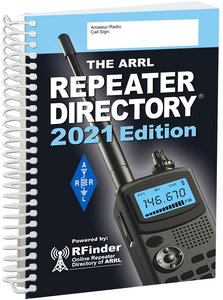 printed directory of on-the-air repeaters, covering repeater systems throughout the US and Canada.
printed directory of on-the-air repeaters, covering repeater systems throughout the US and Canada..jpg) control system. The FCC, in turn, asked ARRL to oversee the coordination efforts. It is to be noted that the Amateur Radio Service is a secondary service on the band.
control system. The FCC, in turn, asked ARRL to oversee the coordination efforts. It is to be noted that the Amateur Radio Service is a secondary service on the band.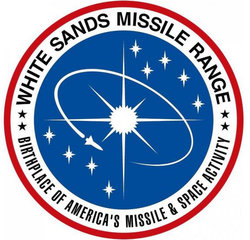 systems are in advanced testing and will become fully operational by early summer 2021." The negotiated deadline for the affected control links to change frequencies is set for May 31, 2021.
systems are in advanced testing and will become fully operational by early summer 2021." The negotiated deadline for the affected control links to change frequencies is set for May 31, 2021. Ultra-portable operation is quickly growing in popularity. Whether for SOTA, POTA, backcountry survival, or just spending time in nature, learning how to operate ultra-portable is a fun and rewarding experience. In this presentation, Mike, KN6EZE, covers the basics for new and experienced ham radio operators.
Ultra-portable operation is quickly growing in popularity. Whether for SOTA, POTA, backcountry survival, or just spending time in nature, learning how to operate ultra-portable is a fun and rewarding experience. In this presentation, Mike, KN6EZE, covers the basics for new and experienced ham radio operators.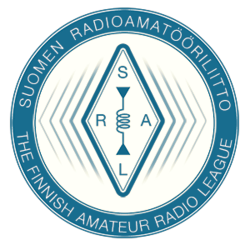 The Finnish Amateur Radio League (
The Finnish Amateur Radio League (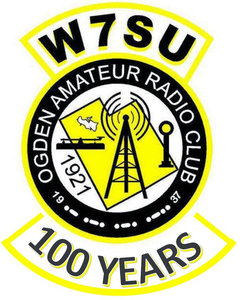 The Ogden Amateur Radio Club (
The Ogden Amateur Radio Club (
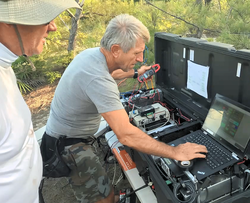

.jpg) World Amateur Radio Day (WARD) 2021 is Sunday, April 18. On that day in 1925, the International Amateur Radio Union (
World Amateur Radio Day (WARD) 2021 is Sunday, April 18. On that day in 1925, the International Amateur Radio Union (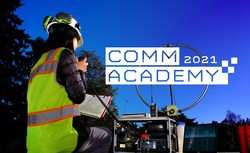
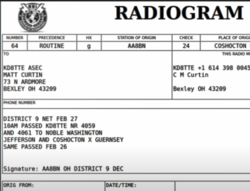 A video demonstrates 60-meter interoperability between amateur and non-amateur stations. The Ohio Section National Traffic System (NTS) Buckeye Net had check-ins from two non-amateur stations during the Military Auxiliary Radio System (MARS) COMEX-21 exercise on February 27. During the call-up, Steve Judd, WB8YLO, Department of Defense MARS, and Department of Homeland Security SHARES stations checked in on SSB and exchanged traffic using digital modes, supported by amateur operators. The net session offers a
A video demonstrates 60-meter interoperability between amateur and non-amateur stations. The Ohio Section National Traffic System (NTS) Buckeye Net had check-ins from two non-amateur stations during the Military Auxiliary Radio System (MARS) COMEX-21 exercise on February 27. During the call-up, Steve Judd, WB8YLO, Department of Defense MARS, and Department of Homeland Security SHARES stations checked in on SSB and exchanged traffic using digital modes, supported by amateur operators. The net session offers a .gif) Years ago, a mysterious signal dubbed "the ditter" showed up on 20 meters. The transmissions turned out to be unintentional. Now, the
Years ago, a mysterious signal dubbed "the ditter" showed up on 20 meters. The transmissions turned out to be unintentional. Now, the  Law enforcement agencies in France seized the equipment of an unidentified radio amateur in late 2020, alleging "insults and threats on the airwaves." The action by federal and local authorities began after complaints erupted within the amateur radio community regarding "inappropriate behavior on the airwaves, punctuated by offensive remarks and death threats." After confirming the source of the transmissions, the National Frequency Agency (ANFR) agents discovered that the licensee had failed to declare his radio installation to the ANFR, which is required in France. The oversight provided an immediate legal basis to seize the individual's radio equipment. -- Thanks to Southgate Amateur Radio News
Law enforcement agencies in France seized the equipment of an unidentified radio amateur in late 2020, alleging "insults and threats on the airwaves." The action by federal and local authorities began after complaints erupted within the amateur radio community regarding "inappropriate behavior on the airwaves, punctuated by offensive remarks and death threats." After confirming the source of the transmissions, the National Frequency Agency (ANFR) agents discovered that the licensee had failed to declare his radio installation to the ANFR, which is required in France. The oversight provided an immediate legal basis to seize the individual's radio equipment. -- Thanks to Southgate Amateur Radio News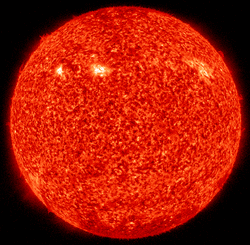 brought the percentage of spotless days so far this year to 38%, down from 57% for 2020, and 77% in 2019.
brought the percentage of spotless days so far this year to 38%, down from 57% for 2020, and 77% in 2019..jpg)








